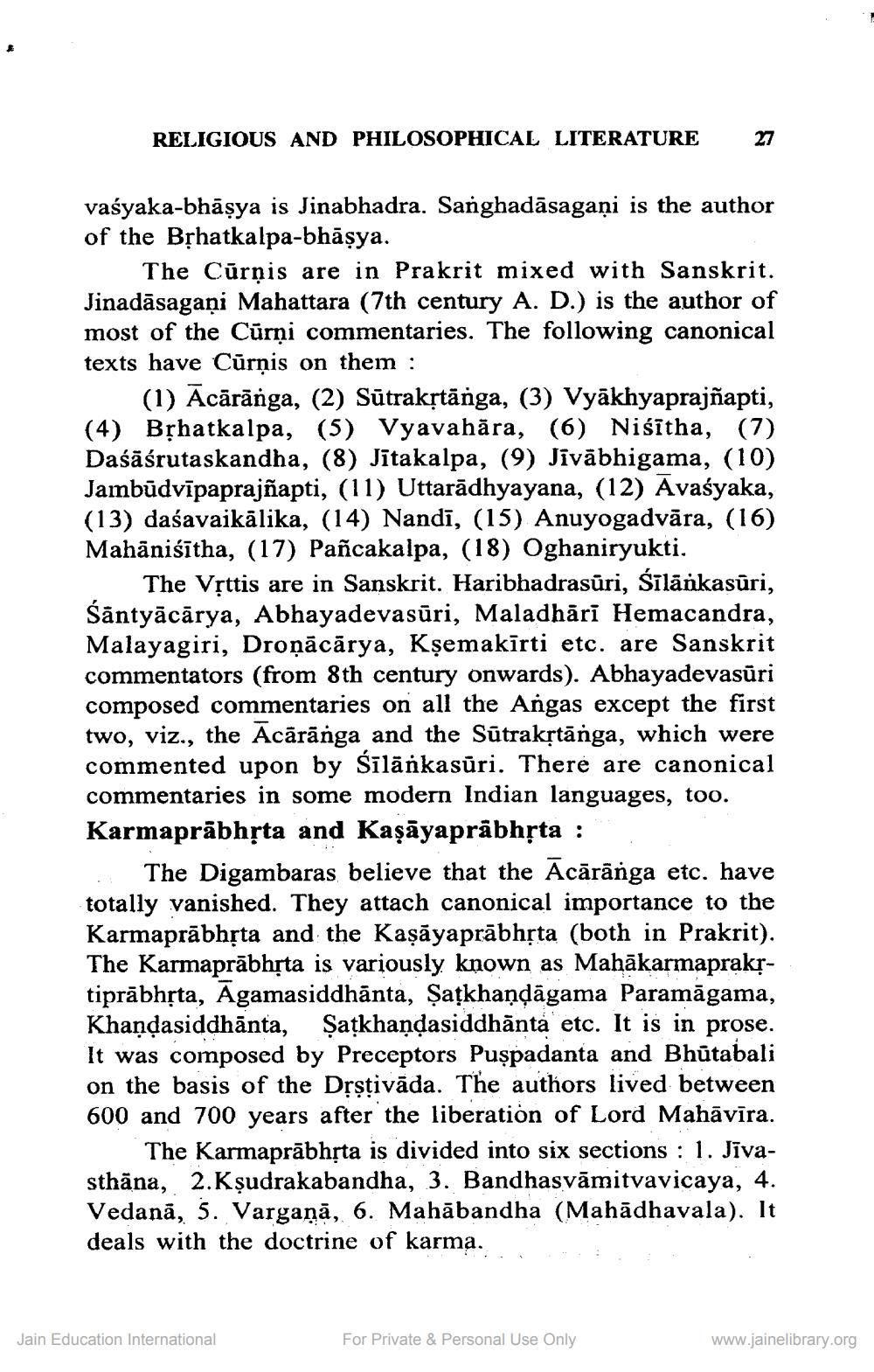________________
RELIGIOUS AND PHILOSOPHICAL LITERATURE
27
vaśyaka-bhāsya is Jinabhadra. Sanghadāsagaņi is the author of the Bțhatkalpa-bhāșya.
The Cūrņis are in Prakrit mixed with Sanskrit. Jinadāsagani Mahattara (7th century A. D.) is the author of most of the Cūrņi commentaries. The following canonical texts have Cūrņis on them :
(1) Ācārānga, (2) Sūtrakṛtānga, (3) Vyākhyaprajñapti, (4) Bșhatkalpa, (5) Vyavahāra, (6) Niśītha, (7) Daśāśrutaskandha, (8) Jītakalpa, (9) Jivābhigama, (10) Jambūdvīpaprajñapti, (11) Uttarādhyayana, (12) Avaśyaka, (13) daśavaikālika, (14) Nandī, (15) Anuyogadvāra, (16) Mahānisītha, (17) Pañcakalpa, (18) Oghaniryukti.
The Vșttis are in Sanskrit. Haribhadrasūri, śīlānkasūri, śāntyācārya, Abhayadevasūri, Maladhārī Hemacandra, Malayagiri, Droņācārya, Kșemakīrti etc. are Sanskrit commentators (from 8th century onwards). Abhayadevasūri composed commentaries on all the Angas except the first two, viz., the Acārānga and the Sūtrakstānga, which were commented upon by Sīlānkasūri. There are canonical commentaries in some modern Indian languages, too. Karmaprābhṛta and Kaşāyaprābhịta :
The Digambaras believe that the Acārānga etc. have totally vanished. They attach canonical importance to the Karmaprābhịta and the Kaşāyaprābhịta (both in Prakrit). The Karmaprābhịta is variously known as Mahākarmaprakrtiprābhịta, Āgamasiddhānta, Șațkhaņņāgama Paramāgama, Khandasiddhānta, Satkhandasiddhānta etc. It is in prose. It was composed by Preceptors Puşpadanta and Bhūtabali on the basis of the Dșstivāda. The authors lived between 600 and 700 years after the liberation of Lord Mahāvīra.
The Karmaprābhrta is divided into six sections : 1. Jīvasthāna, 2.Kșudrakabandha, 3. Bandhasvāmitvavicaya, 4. Vedanā, 5. Vargaņā, 6. Mahābandha (Mahādhavala). It deals with the doctrine of karma.
with the doctor sam4.
.
.
Jain Education International
For Private & Personal Use Only
www.jainelibrary.org




